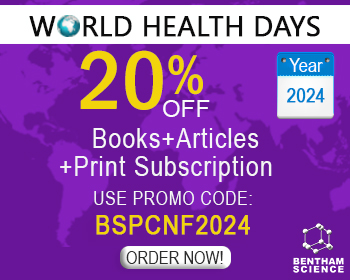Abstract
Metabolic syndrome is an aggregation of conditions and associated with an increased risk of developing diabetes, obesity and cardiovascular diseases (CVD). Edible mushrooms are widely consumed in many countries and are valuable components of the diet because of their attractive taste, aroma, and nutritional value. Medicinal mushrooms are higher fungi with additional nutraceutical attributes having low-fat content and a transisomer of unsaturated fatty acids along with high fiber content, biologically active compounds such as polysaccharides or polysaccharide β-glucans, alkaloids, steroids, polyphenols and terpenoids. In vitro experiments, animal models, and even human studies have demonstrated not only fresh edible mushroom but also mushroom extract that has great therapeutic applications in human health as they possess many properties such as antiobesity, cardioprotective and anti-diabetic effect. They are considered as the unmatched source of healthy foods and drugs. The focus of this report was to provide a concise and complete review of the novel medicinal properties of fresh or dry mushroom and extracts, fruiting body or mycelium and its extracts, fiber, polysaccharides, beta-glucan, triterpenes, fucoidan, ergothioneine from edible mushrooms that may help to prevent or treat metabolic syndrome and associated diseases.
Keywords: Anti-diabetic activity, anti-obesity activity, cardioprotective activities, edible mushroom, metabolic disorders, polysaccharide, novel medicinal properties.
[http://dx.doi.org/10.1002/9780470367285.ch1]
[http://dx.doi.org/10.1556/066.2019.48.2.11]
[http://dx.doi.org/10.1021/jf073181y] [PMID: 18266318]
[http://dx.doi.org/10.3998/mpub.20246]
[http://dx.doi.org/10.1016/j.fitote.2010.06.005] [PMID: 20550954]
[http://dx.doi.org/10.1142/3296]
[http://dx.doi.org/10.1007/s00253-002-1076-7] [PMID: 12436306]
[http://dx.doi.org/10.1016/j.foodchem.2008.07.077]
[http://dx.doi.org/10.1017/S0007114599000471] [PMID: 10999022]
[http://dx.doi.org/10.1016/S0899-9007(00)00341-5] [PMID: 10906601]
[http://dx.doi.org/10.1002/9780470367285.ch3]
[http://dx.doi.org/10.1007/BF00419460] [PMID: 24415377]
[http://dx.doi.org/10.1615/IntJMedMushr.v2.i1.10]
[http://dx.doi.org/10.1155/2015/376387] [PMID: 25685150]
[http://dx.doi.org/10.1021/jf001525d] [PMID: 11368601]
[http://dx.doi.org/10.1016/j.fct.2008.04.030] [PMID: 18538460]
[http://dx.doi.org/10.1016/j.foodchem.2006.07.038]
[http://dx.doi.org/10.1021/jf071435+] [PMID: 17927152]
[http://dx.doi.org/10.1021/jf0201273] [PMID: 12358482]
[http://dx.doi.org/10.1016/j.foodchem.2004.03.006]
[http://dx.doi.org/10.1093/jn/90.4.371] [PMID: 6005929]
[http://dx.doi.org/10.5551/jat.9.149] [PMID: 12226557]
[http://dx.doi.org/10.1016/j.nutres.2008.03.010] [PMID: 19083429]
[PMID: 9987601]
[http://dx.doi.org/10.5694/j.1326-5377.2006.tb00644.x] [PMID: 17137436]
[http://dx.doi.org/10.1146/annurev.med.56.082103.104751] [PMID: 15660501]
[http://dx.doi.org/10.1016/S0140-6736(05)66378-7] [PMID: 15836891]
[http://dx.doi.org/10.1001/jama.288.21.2709] [PMID: 12460094]
[http://dx.doi.org/10.1161/01.CIR.0000140677.20606.0E] [PMID: 15326067]
[http://dx.doi.org/10.1001/archinte.163.4.427] [PMID: 12588201]
[http://dx.doi.org/10.2337/diacare.24.4.683] [PMID: 11315831]
[http://dx.doi.org/10.1038/sj.ijo.0800541] [PMID: 9481598]
[http://dx.doi.org/10.1038/nature05487] [PMID: 17167476]
[PMID: 11158035]
[http://dx.doi.org/10.1159/000209744] [PMID: 19299892]
[http://dx.doi.org/10.1016/S0024-3205(03)00646-5] [PMID: 12954449]
[http://dx.doi.org/10.1016/j.amjmed.2003.08.012] [PMID: 14678864]
[http://dx.doi.org/10.1161/01.CIR.93.10.1780] [PMID: 8635254]
[http://dx.doi.org/10.2337/diacare.27.4.1011] [PMID: 15047666]
[PMID: 26557292]
[http://dx.doi.org/10.1161/CIRCULATIONAHA.109.192644] [PMID: 19805654]
[http://dx.doi.org/10.1093/eurheartj/ehn387] [PMID: 18775919]
[http://dx.doi.org/10.1053/j.semtcvs.2006.06.003]
[http://dx.doi.org/10.1016/S0006-291X(02)00947-6] [PMID: 12200125]
[http://dx.doi.org/10.1016/j.autrev.2003.09.002] [PMID: 15110232]
[http://dx.doi.org/10.1196/annals.1329.054] [PMID: 15659827]
[http://dx.doi.org/10.1039/c2np00074a] [PMID: 22491825]
[http://dx.doi.org/10.1002/med.20156] [PMID: 19378317]
[http://dx.doi.org/10.1007/BF02850119] [PMID: 12772818]
[http://dx.doi.org/10.2174/092986712800229078] [PMID: 22414106]
[http://dx.doi.org/10.3390/molecules21060807] [PMID: 27338339]
[http://dx.doi.org/10.1006/pmed.1993.1014] [PMID: 8483856]
[http://dx.doi.org/10.1016/j.foodchem.2010.02.045]
[http://dx.doi.org/10.1002/fsn3.962] [PMID: 31024702]
[http://dx.doi.org/10.1016/j.jtcme.2020.03.004] [PMID: 32670819]
[http://dx.doi.org/10.1155/2013/185259] [PMID: 23737819]
[http://dx.doi.org/10.3177/jnsv.56.48] [PMID: 20354346]
[http://dx.doi.org/10.1186/1472-6882-11-74] [PMID: 21929808]
[http://dx.doi.org/10.1016/j.appet.2013.09.008] [PMID: 24056209]
[http://dx.doi.org/10.4077/CJP.2014.BAC245] [PMID: 25246061]
[http://dx.doi.org/10.1038/nrgastro.2015.137] [PMID: 26284561]
[http://dx.doi.org/10.1038/ncomms8489] [PMID: 26102296]
[http://dx.doi.org/10.1097/MCO.0000000000000209] [PMID: 26154278]
[http://dx.doi.org/10.3390/molecules23112880] [PMID: 30400600]
[http://dx.doi.org/10.1007/s00394-019-02162-7] [PMID: 31865422]
[http://dx.doi.org/10.1373/clinchem.2007.095679] [PMID: 17954494]
[PMID: 1802191]
[PMID: 1751479]
[http://dx.doi.org/10.1159/000177762] [PMID: 8373138]
[http://dx.doi.org/10.1159/000177644] [PMID: 1897899]
[http://dx.doi.org/10.1007/BF01625688] [PMID: 8896287]
[http://dx.doi.org/10.1016/S0899-9007(97)00471-1] [PMID: 9583372]
[http://dx.doi.org/10.1007/BF02128749] [PMID: 7607302]
[http://dx.doi.org/10.1016/S0271-5317(05)80323-9]
[http://dx.doi.org/10.1007/BF01610577] [PMID: 8197787]
[http://dx.doi.org/10.1021/jf020648q] [PMID: 12452672]
[PMID: 9475042]
[http://dx.doi.org/10.1093/jn/nxz075] [PMID: 31162580]
[http://dx.doi.org/10.1002/ptr.1355] [PMID: 14750200]
[http://dx.doi.org/10.3329/mmj.v16i1.261] [PMID: 17344789]
[PMID: 18700439]
[http://dx.doi.org/10.3177/jnsv.33.341] [PMID: 3443885]
[http://dx.doi.org/10.3177/jnsv.34.433] [PMID: 3236086]
[http://dx.doi.org/10.3177/jnsv.35.91] [PMID: 2738717]
[http://dx.doi.org/10.5650/jos.57.675] [PMID: 19001780]
[http://dx.doi.org/10.1080/87559129509541024]
[http://dx.doi.org/10.1023/A:1016503804742] [PMID: 12236580]
[http://dx.doi.org/10.1016/j.foodchem.2007.03.052]
[http://dx.doi.org/10.1016/j.jfca.2006.04.007]
[http://dx.doi.org/10.1021/jf070407o] [PMID: 17497883]
[http://dx.doi.org/10.1161/CIRCULATIONAHA.106.679985] [PMID: 17389261]
[http://dx.doi.org/10.1093/ajcn/78.3.370] [PMID: 12936917]
[http://dx.doi.org/10.1093/ajcn/77.5.1146] [PMID: 12716665]
[PMID: 2205699]
[http://dx.doi.org/10.1016/0271-5317(96)00191-1]
[http://dx.doi.org/10.1093/ajcn/69.1.30] [PMID: 9925120]
[http://dx.doi.org/10.1093/jn/130.9.2151] [PMID: 10958806]
[http://dx.doi.org/10.1021/bm010032u] [PMID: 11749192]
[http://dx.doi.org/10.1080/07388550500376166] [PMID: 16419618]
[http://dx.doi.org/10.1016/j.carbpol.2008.03.018]
[http://dx.doi.org/10.1016/j.intimp.2009.02.015] [PMID: 19286482]
[http://dx.doi.org/10.1089/jmf.2009.0194] [PMID: 21091247]
[http://dx.doi.org/10.1124/jpet.114.214049] [PMID: 25022513]
[http://dx.doi.org/10.1016/j.jss.2007.04.020] [PMID: 17603080]
[http://dx.doi.org/10.1016/j.foodchem.2017.04.109] [PMID: 28530594]
[http://dx.doi.org/10.1136/heartjnl-2019-315485] [PMID: 31672783]
[http://dx.doi.org/10.1016/j.ejphar.2018.04.015] [PMID: 29665363]
[http://dx.doi.org/10.18805/ijare.v49i5.5801]
[http://dx.doi.org/10.1007/BF02461667]
[http://dx.doi.org/10.3390/molecules21050639] [PMID: 27196881]
[http://dx.doi.org/10.3329/imcj.v8i1.22982]
[http://dx.doi.org/10.1089/acm.2006.6054] [PMID: 17309383]
[http://dx.doi.org/10.1002/fsn3.1310] [PMID: 31993159]
[http://dx.doi.org/10.1016/j.sjbs.2020.01.027] [PMID: 32127771]
[http://dx.doi.org/10.1111/jfbc.13170] [PMID: 32160646]
[http://dx.doi.org/10.1248/bpb.17.1106] [PMID: 7820117]
[http://dx.doi.org/10.1080/10408398.2016.1244154] [PMID: 28574284]
[http://dx.doi.org/10.1111/nyas.13446] [PMID: 28891090]
[http://dx.doi.org/10.3390/ijms18112331] [PMID: 29113066]
[http://dx.doi.org/10.3390/ijms18112390] [PMID: 29125587]
[http://dx.doi.org/10.1155/2016/9685257] [PMID: 27274781]
[http://dx.doi.org/10.2337/db14-0716] [PMID: 25338812]
[http://dx.doi.org/10.1001/archinternmed.2010.356] [PMID: 21098346]
[http://dx.doi.org/10.1016/j.lfs.2004.12.019] [PMID: 15850599]
[http://dx.doi.org/10.1016/j.intimp.2009.09.024] [PMID: 19811769]
[http://dx.doi.org/10.1016/j.ijbiomac.2015.03.026] [PMID: 25819220]
[http://dx.doi.org/10.1016/j.phanu.2015.02.001]
[http://dx.doi.org/10.1016/j.carbpol.2011.04.051]
[http://dx.doi.org/10.1016/j.carbpol.2013.02.076] [PMID: 23618250]
[http://dx.doi.org/10.1016/j.carbpol.2013.04.019] [PMID: 23768587]
[http://dx.doi.org/10.1016/j.ijbiomac.2014.09.011] [PMID: 25236607]
[http://dx.doi.org/10.1007/s40242-012-2218-9]
[http://dx.doi.org/10.1016/j.ijbiomac.2012.06.021] [PMID: 22728640]
[http://dx.doi.org/10.1007/s00253-007-0972-2] [PMID: 17457544]
[http://dx.doi.org/10.1016/j.carbpol.2012.05.011] [PMID: 24751027]
[http://dx.doi.org/10.1016/j.nutres.2009.12.003] [PMID: 20116660]
[http://dx.doi.org/10.1016/j.freeradbiomed.2016.04.013] [PMID: 27101740]
[http://dx.doi.org/10.1155/2017/4824371] [PMID: 29181125]
[http://dx.doi.org/10.1016/S0278-6915(02)00177-1] [PMID: 12419688]
[http://dx.doi.org/10.1615/IntJMedMushr.v13.i4.40] [PMID: 22164764]
[http://dx.doi.org/10.1155/2013/304713] [PMID: 24371454]
[http://dx.doi.org/10.1615/IntJMedMushrooms.v17.i1.50] [PMID: 25746405]
[http://dx.doi.org/10.1016/j.appet.2007.11.007] [PMID: 18221822]
[http://dx.doi.org/10.1155/2012/856381] [PMID: 22973406]
[http://dx.doi.org/10.1007/s11130-016-0552-7] [PMID: 27193019]
[http://dx.doi.org/10.1248/bpb.19.294] [PMID: 8850325]
[http://dx.doi.org/10.1016/j.fct.2011.12.020] [PMID: 22226943]
[http://dx.doi.org/10.1016/j.phymed.2005.02.002] [PMID: 16716913]
[http://dx.doi.org/10.1186/s12906-016-1278-7] [PMID: 27553852]
[http://dx.doi.org/10.1093/ecam/nem010] [PMID: 18604261]



























